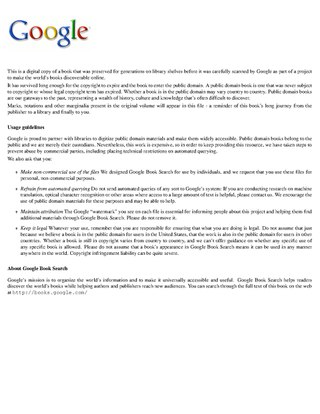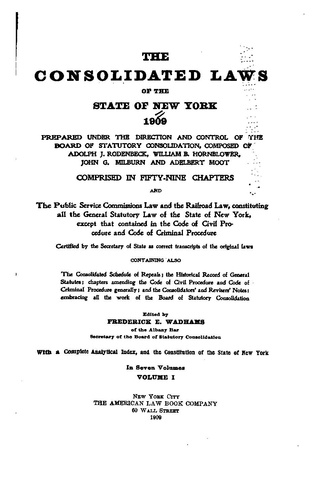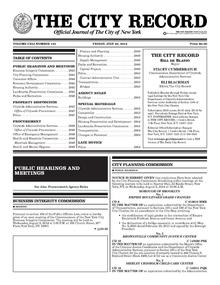
The Appellate Divisions of the Supreme Court of the State of New York are the intermediate appellate courts in New York State. There are four Appellate Divisions, one in each of the state's four Judicial Departments.

The government of New York City, headquartered at New York City Hall in Lower Manhattan, is organized under the New York City Charter and provides for a mayor-council system. The mayor is elected to a four-year term and is responsible for the administration of city government. The New York City Council is a unicameral body consisting of 51 members, each elected from a geographic district, normally for four-year terms. All elected officials are subject to a two consecutive-term limit. The court system consists of two citywide courts and three statewide courts.

The New York City Council is the lawmaking body of New York City. It has 51 members from 51 council districts throughout the five boroughs.

The New York City Department of Transportation (NYCDOT) is the agency of the government of New York City responsible for the management of much of New York City's transportation infrastructure. Ydanis Rodriguez is the Commissioner of the Department of Transportation, and was appointed by Mayor Eric Adams on January 1, 2022. Former Commissioners have included Polly Trottenberg, Janette Sadik-Khan, and Iris Weinshall. There Training Center is located at 140 General R W Berry Dr, Queens, NY 11359, off of Exit 32 of the Cross Island Expressway.

The Government of the State of New York, headquartered at the New York State Capitol in Albany, encompasses the administrative structure of the U.S. state of New York, as established by the state's constitution. Analogously to the US federal government, it is composed of three branches: executive, legislative, and judicial. The head of the executive is the governor. The Legislature consists of the Senate and the Assembly. The Unified Court System consists of the Court of Appeals and lower courts. The state is also divided into counties, cities, towns, and villages, which are all municipal corporations with their own government.

The New York City Taxi and Limousine Commission is an agency of the New York City government that licenses and regulates the medallion taxis and for-hire vehicle industries, including app-based companies such as Uber and Lyft. The TLC's regulatory landscape includes medallion (yellow) taxicabs, green or Boro taxicabs, black cars, community-based livery cars, commuter vans, paratransit vehicles (ambulettes), and some luxury limousines.
The New York City Department of Buildings (DOB) is the department of the New York City government that enforces the city's building codes and zoning regulations, issues building permits, licenses, registers and disciplines certain construction trades, responds to structural emergencies and inspects over 1,000,000 new and existing buildings. Its regulations are compiled in title 1 of the New York City Rules.
The New York City Law Department, also known as the Office of the Corporation Counsel, is the department of the government of New York City responsible for most of the city's legal affairs. The department is headed by the Corporation Counsel, currently Sylvia Hinds-Radix, the 81st official to hold this position.

The Judiciary of New York is the judicial branch of the Government of New York, comprising all the courts of the State of New York.

The New York City Department of Investigation (DOI) is a law enforcement agency of the government of New York City that has been referred to by some observers as New York City's "secret police" because its investigations are confidential and its investigators are not uniformed.

The New York City Department of Finance (DOF) is the revenue service, taxation agency and recorder of deeds of the government of New York City. Its Parking Violations Bureau is an administrative court that adjudicates parking violations, while its Sheriff's Office is the city's primary civil law enforcement agency.
The New York City Department of Citywide Administrative Services (DCAS) is a City of New York government agency. It's mission is to make city government work for all New Yorkers. It is responsible for:

The law of New York consists of several levels, including constitutional, statutory, regulatory and case law, and also includes local laws, ordinances, and regulations. The Consolidated Laws form the general statutory law.

Laws of the State of New York are the session laws of the New York State Legislature published as an annual periodical, i.e., "chapter laws", bills that become law which have been assigned a chapter number in the office of the legislative secretary to the governor, and printed in chronological order. Laws are usually cited in the form of "Chapter X of the Laws of YYYY" or "L. YYYY, c. X", where X is the chapter number and YYYY is the year.

The Consolidated Laws of the State of New York are the codification of the permanent laws of a general nature of New York enacted by the New York State Legislature.
The Administrative Code of the City of New York contains the codified local laws of New York City as enacted by the New York City Council and Mayor. As of February 2023, it contains 37 titles, numbered 1 through 16, 16-A, 16-B, 17 through 20, 20-A, 21, 21-A, and 22 through 33.
The Rules of the City of New York (RCNY) contains the compiled rules and regulations of New York City government agencies. It contains approximately 6,000 rules and regulations in 71 titles, each covering a different city agency. The City Record is the official journal of New York City. The rules can also be viewed and the public can comment on the city's rules website - NYC Rules.

The New York City Department of Citywide Administrative Services Police is responsible for providing onsite security services to the New York City Department of Citywide Administrative Services (DCAS), to enforce state and city laws at all 53 facilities owned, leased and/or operated by the New York City Department of Citywide Administrative Services.

The Business Integrity Commission (BIC) is the agency of the New York City government responsible for regulating the private carting industry, public wholesale markets businesses, and the shipboard gambling industry. Its purpose is to combat corruption in these industries from organized crime, and was created from the 2001 Organized Crime Control Commission, itself created from the 1996 Trade Waste Commission, the Markets Division in the Small Business Services Department, and the Gambling Commission.
Publications of minutes and proceedings, often known as journals, of legislatures are often kept for record-keeping. Unlike government gazettes which publish government notices and the like for general public dissemination, journals of these bodies merely records their proceedings and are not necessarily meant for the general public.













